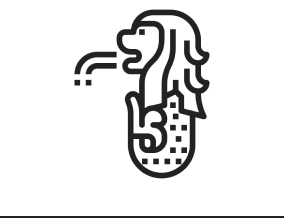Are you having trouble connecting your SAP systems to SAP Analytics Cloud (SAC)?
With the increasing adoption of cloud-based analytics solutions, businesses must establish seamless and secure connections between their on-premise SAP systems and SAC.
However, many organizations struggle with the variety of available connection options and associated complexities. If you are one of them, don’t worry – you are not alone.
This blog post aims to demystify the different SAP SAC connection types, addressing common pain points and providing relevant statistics to help you choose the best option for your business needs.
Some SAP SAC (SAP Analytics Cloud) Connection Types
Understanding several SAP SAC connection types is crucial to gaining the maximum benefits of SAP SAC. Let’s have a look at some major connections included in the SAP analytics cloud.
Live Data Connection
A live data connection allows you to access and analyze data directly from its original source system without having to import or copy the data into SAC. This approach offers several benefits, including reduced data duplication, improved security, and real-time insights.
SAP provides pre-built connectors for many popular data sources, including SAP ERP, SAP BW, SAP HANA, and SAP Universe. When using a live data connection, any changes made to the data in the source system will automatically be reflected in SAC.
Imported Data Connection
An imported data connection involves bringing data into SAC from an external source system by creating a data model. You can either upload files (such as CSV, Excel, or JSON) or leverage existing database connections.
Once the data is imported, you can create stories, reports, and other visualizations based on that data. Compared to live data connections, imported data connections offer greater flexibility in terms of data manipulation and transformation. Additionally, they can improve performance when working with very large datasets since the processing occurs locally within SAC rather than remotely in the source system.
However, keep in mind that because the data is being stored within SAC, any updates made to the data in the source system won’t be reflected unless you manually refresh the data model. To address this limitation, you can schedule automatic refreshes at regular intervals or trigger them manually whenever necessary.
Universes
Universes are essentially metadata layers that sit on top of various data sources and provide a simplified view of the underlying data structures.
They enable end-users to easily navigate complex data models and build their own queries without requiring extensive technical knowledge. SAP SAC supports both UNX and UNV universe file formats, which can be created using tools like SAP BusinessObjects Information Design Tool or SAP Lumira Designer.
Planning Connections
If you’re using SAP Analytics Cloud for planning and forecasting, you may want to consider setting up a planning connection between SAC and your source systems. This type of connection enables bi-directional communication between SAC and other applications like SAP BPC or SAP Fiori elements.
For instance, you could set up a planning connection to allow users to input data into SAC and then push those values back out to a centralized financial reporting system.
REST APIs
For more advanced integration scenarios, SAP SAC also offers support for REST APIs. These APIs allow developers to programmatically interact with SAC and automate tasks such as data imports, exports, and model creation.
Working with APIs typically requires a higher level of technical expertise compared to some of the other connection methods discussed here. However, they can be extremely powerful for organizations looking to streamline workflows and enhance productivity.
OData Connections
OData (Open Data Protocol) is a standardized protocol for building and consuming RESTful web services. It allows clients to retrieve resources via HTTP requests while leveraging common query parameters and response formats.
SAP SAC supports OData connections, enabling you to consume data from external sources like Microsoft Dynamics CRM, SharePoint, or custom-developed applications. OData connections offer several advantages over traditional REST APIs, including enhanced discoverability, simpler query syntax, and built-in caching mechanisms.
MDX Connections
Multidimensional Expressions (MDX) is a query language used primarily for retrieving data from multidimensional databases like SAP BW or SQL Server Analysis Services.
If your organization relies heavily on MDX-based analytics, you might find value in establishing an MDX connection between SAC and your source systems. This approach enables you to leverage familiar MDX syntax while benefiting from SAC’s robust visualization capabilities.
Database Connections
Last but not least, SAP SAC supports direct database connections for popular RDBMS platforms like Oracle, MySQL, PostgreSQL, and DB2. Establishing a database connection allows you to tap into raw data residing within these systems and perform ad hoc analysis without relying on intermediary tools or technologies.
Direct database connections can be particularly useful when dealing with large volumes of structured data that don’t require sophisticated transformations or aggregations before analysis.
Conclusion
Choosing the right SAP SAC connection types depends on several factors, including the size and complexity of your data, the desired level of real-time insight, and the specific use case(s) you have in mind. Understanding the key differences between each option can help ensure that you select the optimal solution for your organization’s needs. Whether you opt for live data connections, imported data models, universes, planning connections, REST APIs, or others, SAC offers ample choices to meet your analytical demands. And we can help you with SAP Consulting and Implementation Services at affordable cost.






